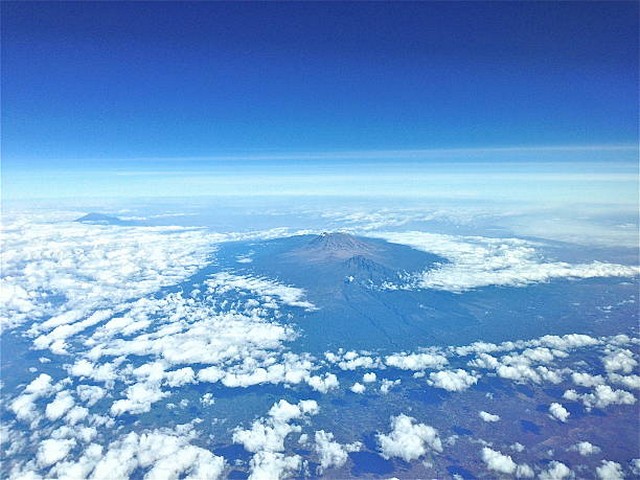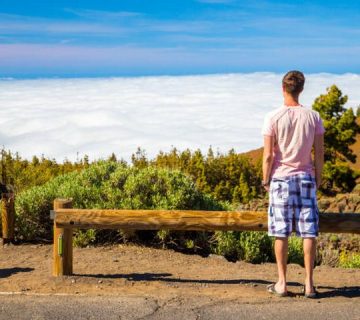Best Photo Spots On Kilimanjaro For Instagram-worthy Shots
As a travel enthusiast or a budding photographer, you may often find yourself searching for that perfect backdrop that can translate your experiences into stunning, shareable visuals. Mount Kilimanjaro, the rooftop of Africa, is more than just a challenge to conquer—it’s a picturesque canvas that offers some of the most breathtaking vistas in the world. For those ready to capture the raw beauty of nature, the journey up Kilimanjaro provides a plethora of picture-perfect moments. In this blog, we, at Kilimanjaro Centre for Trekking and Ecotourism (KCTE), will guide you through the best photo spots on Kilimanjaro that promise to make your Instagram feed shine with the luster of adventure.
Why Kilimanjaro Is A Photographer’s Paradise
Mount Kilimanjaro is not only famous for its height but also for its diverse ecosystems. From rainforests and alpine meadows to arctic summits, each altitude presents its own unique landscape. This natural diversity means you can capture everything from lush greenery and wild fauna to stark, snowy peaks—all within the span of a few days. The varying climates and the dramatic changes in scenery provide ample opportunities for capturing Instagram-worthy shots that can narrate the story of your epic journey.
Unveil The Magic At These Top Photogenic Sites
1. Marangu Route – The Gateway to Panoramic Pleasures
Begin your ascent on the Marangu Route, often dubbed the "Coca-Cola" route, which offers some of the most accessible and scenic views for photographers. The route is rich with thick montane forests, where the light filters through the canopy, creating a mystical atmosphere perfect for moody, ethereal shots. As you advance, the landscape transitions dramatically, providing a new backdrop at every campsite.
2. Mandara Hut – A Forest Haven
Near the first camp on the Marangu route, Mandara Hut is ensconced in the lushness of a tropical rainforest. Here, the wooden A-frame huts provide a charming contrast against the dense greenery—a delightful scene for architecture and nature juxtaposed in one frame.
3. Horombo Hut – Sunset and Sunrise Spectacles
Not far from your next stop, Horombo Hut, the landscape opens up to sweeping views of the Mawenzi and Kibo peaks. It’s an ideal spot for golden-hour photography. Capture the sunrise bathing the peaks in a warm glow or the sunset draping the mountains in hues of pink and purple.
4. Kibo Hut – The Moonlight Landscape
As you approach Kibo Hut, the terrain shifts to a more barren, lunar-like landscape. The starkness of the alpine desert, combined with the dramatic rock formations and the towering background of Kibo peak, makes for surreal daytime photography under the harsh light of the sun or night shots under a star-lit sky.
5. Uhuru Peak – The Summit Snap
Reaching Uhuru Peak, the highest point in Africa, is a moment of triumph and emotion—a culmination of your trekking endeavor. The signboard at Uhuru Peak is perhaps the most iconic photo spot on Kilimanjaro. A snapshot here, with the breathtaking views of glaciers and clouds below you, is a must-have in your collection.
Capturing The Kilimanjaro Spirit: Tips For Photographers
- Early Morning Magic: Start your day early to catch the soft morning light which is ideal for landscape photography. This also helps you avoid the harsh midday sun.
- Pack Light But Right: While you want to keep your backpack light, don’t forget to carry essential photography gear such as lenses suitable for landscapes and wildlife, extra batteries, and memory cards.
- Respect The Mountain: Always stay on designated trails and respect wildlife habitation. Kilimanjaro is as delicate as it is beautiful.
- Play With Perspectives: Vary your shots by taking wide landscapes, detailed macros, and human interest shots with your trekking companions. Each type of photo will tell a different part of your Kilimanjaro story.
Why Choose KCTE For Your Kilimanjaro Adventure?
Embarking on a trek to Kilimanjaro is a significant undertaking, and having the right team by your side can make all the difference. At Kilimanjaro Centre for Trekking and Ecotourism, we pride ourselves in offering expert guidance, superior safety standards, and a deep respect for the local environment. Our experienced guides know all the hidden gems and are skilled in helping you capture those magical moments while ensuring your journey is safe and enjoyable.
FAQs About Photography on Kilimanjaro
What is the best time of the year for photography on Kilimanjaro?
The best months for clear skies and optimal weather are from late June to October, and from late December to early March.
Do I need special permits to photograph on Kilimanjaro?
No special permits are required for personal photography, but commercial shoots might need prior arrangements. Always check the latest regulations before your trip.
Can I fly a drone to capture aerial shots on Kilimanjaro?
Drone usage is restricted in national parks in Tanzania, including Kilimanjaro. You must obtain permission from the authorities to operate a drone.
What type of camera equipment is recommended?
A DSLR or mirrorless camera with a good zoom lens can cover most needs. However, for ease of carrying, high-quality compact cameras or even advanced smartphones can also capture excellent images.
Capture Your Kilimanjaro Journey With KCTE
Whether you’re a professional photographer or an Instagram enthusiast, Kilimanjaro offers a spellbinding array of photogenic spots that can bring your social media feeds to life. By booking your climb with Kilimanjaro Centre for Trekking and Ecotourism, you’re not just signing up for an adventure; you’re ensuring your journey up this majestic mountain is picturesque and unforgettable. Ready to capture the soul of Kilimanjaro through your lens? Contact us today to plan your photographic expedition to the peak!
Remember, every picture you take is not just a testament to your photographic skills but also a celebration of reaching new heights—literally and metaphorically. Let Kilimanjaro be your muse, and let KCTE be your guide.




